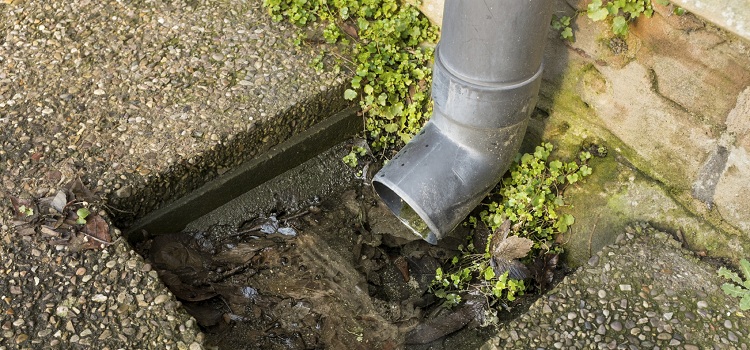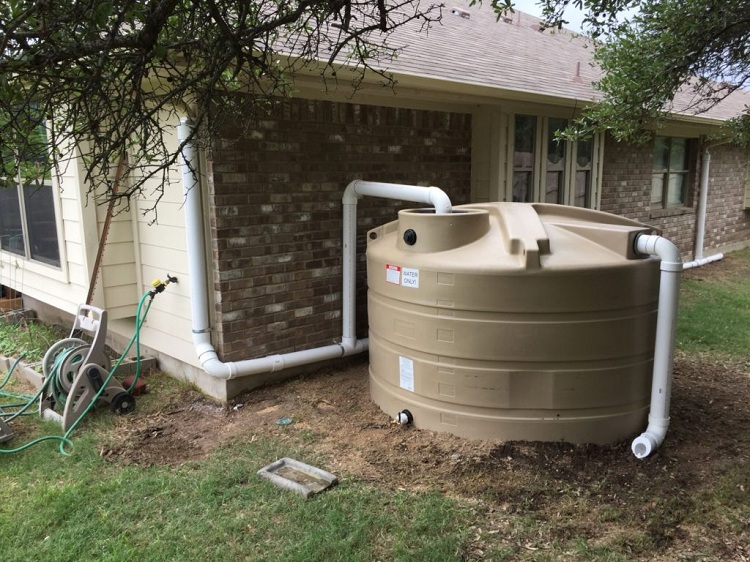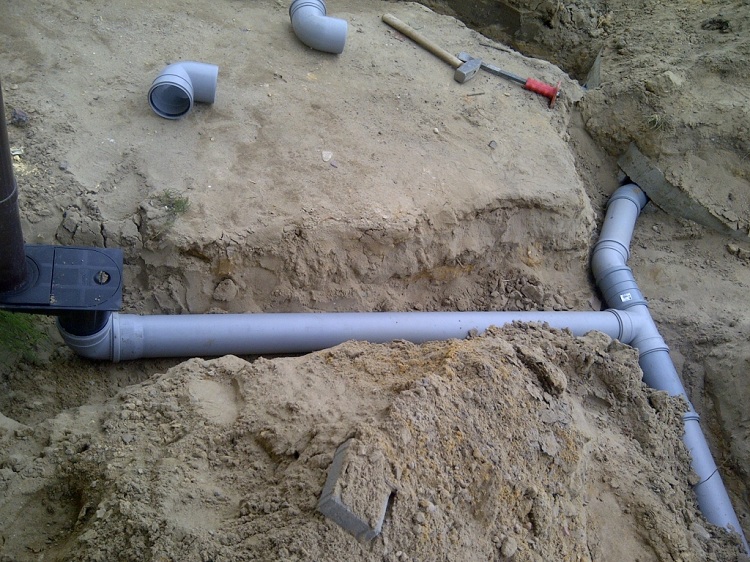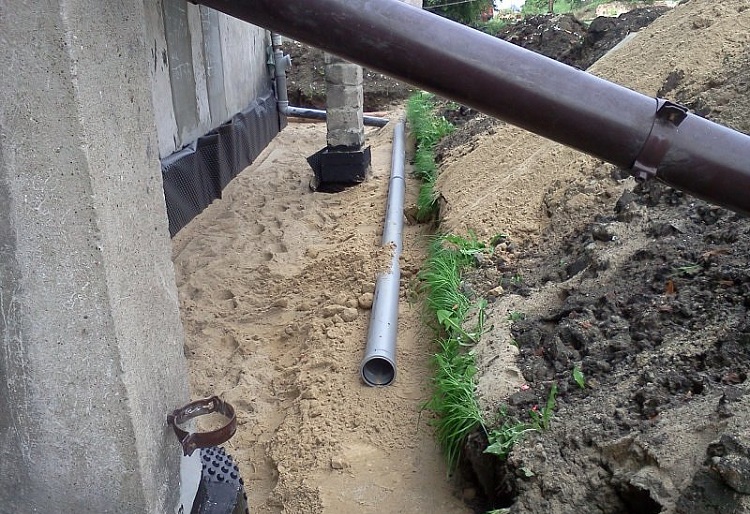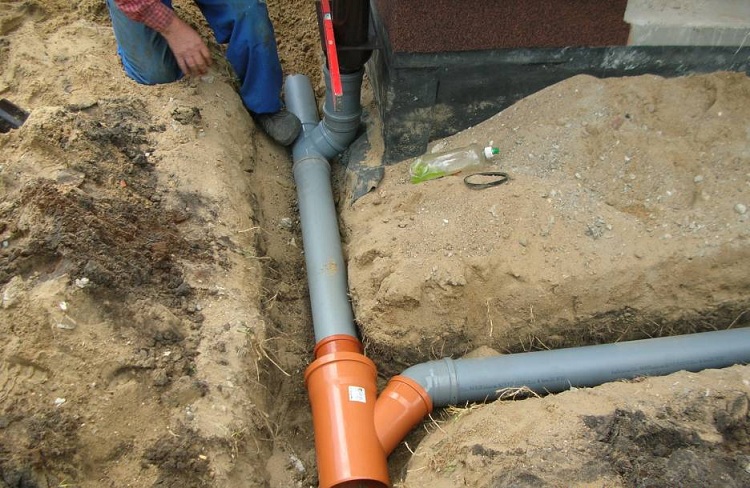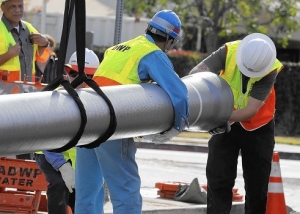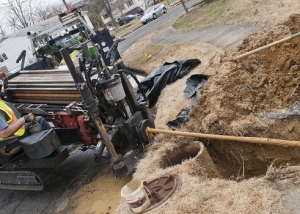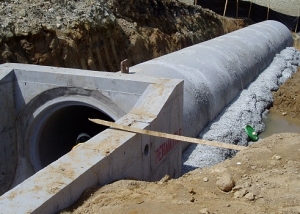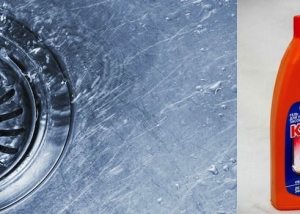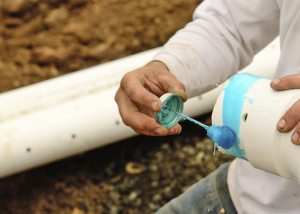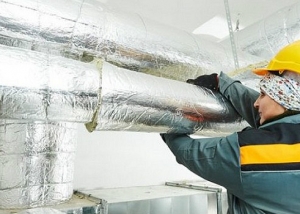So that the foundation is not saturated with moisture and does not collapse, so that there is no flood in the area after every rain, precipitation should be removed. This requires rain sewage. You can see it in cities - this is a system of canals and water intake devices. The storm sewer of a suburban private house is smaller, but its essence is the same. To say that it is quite simple to do it is impossible, but a real home master will cope with this task.
Content
Basic concepts
The storm sewer consists of wells interconnected by pipes. Such a system is designed not only to collect excess water from the paths of the infield, but also to protect the foundation of the house from flooding, which can cause its destruction. In addition, before the water is discharged into the sewage collector or outside the local area, it is cleaned of debris, sand, and various impurities.
1. Elements. Stormwater in a private house is equipped with:
- roof-mounted gutter system. These are gutters fixed along the bevels. It gathers precipitation from the roof. They flow down through mounted funnels through drainpipes;
- precipitation receivers. They settle down on the ground. These include sand traps, linear drainage systems, storm water inlets, receiving funnels. They are arranged so that the reception of precipitation is carried out as efficiently as possible. Funnels or point receivers are usually placed under drainpipes. In places with paving slabs, on asphalt, concrete pads, several receivers are placed;
- line receivers. Put them along the tracks with a slight slope. This ensures normal drainage of water;
- systems for storage, discharge or redistribution of precipitation.
The problem of where to rainfall with incredible speed raises the most questions. Firstly, they can be accumulated for the purpose of further watering the green spaces growing on the site. To do this, it is necessary to reduce all the pipes into one or more large tanks. Water is pumped into the irrigation system from there using a pump.
Secondly, when there is nothing to water or there is simply nowhere to put such a large amount of liquid, storm water can be diverted to a nearby body of water, a gutter or a central sewer. If it is impossible to realize such options, a system of water discharge into the soil is set up, consisting of plastic perforated pipes buried in the ground.
2. Types of storm sewers. The storm sewage of a country private house is of three types:
1. Overground. Stormwater of this type is a drainage gutter in the coating. Water through them is discharged into the garden / drain or flows into a specific place.
2. Underground. All system components are laid below ground level.
Good to know! Experts recommend such a technical solution if increased requirements are imposed on the aesthetics of the local area.However, it requires significant investment, associated primarily with a large amount of earthwork.
It is advisable to equip such a system only at the construction stage or with a complete alteration of the site.
Underground rainfall, in turn, is divided into:
- freezing. In winter and early spring it does not work, but its device is simpler - the laying depth is less than a meter with a permissible minimum of 30 centimeters;
- non-freezing. Storm is laid below the freezing mark. Each region has its own. The Middle Strip of Russia is characterized by the value of this indicator somewhere at the level of 150-170 centimeters. The main disadvantage is the high cost.
3. Mixed. Part of the rainwater drainage system is done in the ground, part on the surface of the earth. This is the best option for the amount of money spent, as well as in appearance.
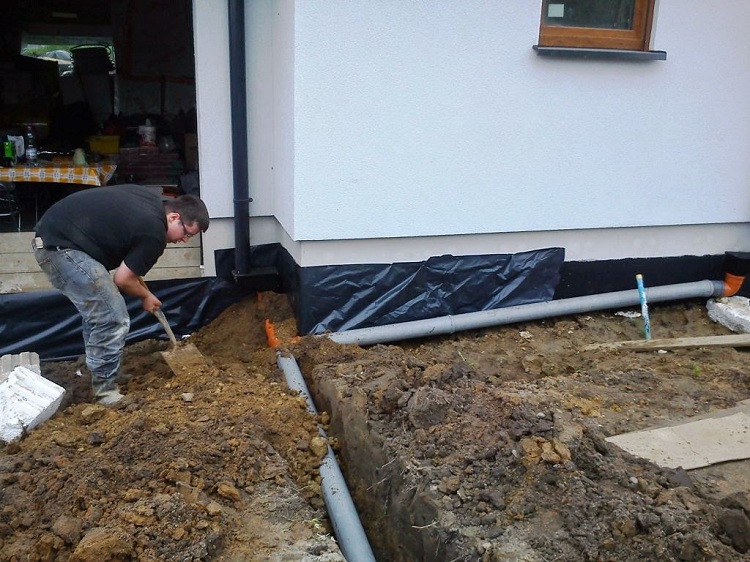
For the installation of an underground system, trenches are required, the depth of which will depend on various factors
Each specific case involves the design of its own scheme - there is no single methodology. The device of storm sewers in a private house depends on the characteristics of the site: the absorbency of the soil, terrain, buildings, and layout.
Principle of operation
Stormwater works like this:
- melt and sedimentary water is collected in special wells along the trays and gutters located throughout the site;
- pallets are installed to collect water from the roof near the porch. These elements, depending on the requirements for strength, are made of concrete or plastic;
- in the garden, water is collected through storm pipes. Excess moisture is redirected to the well through them;
- filtration of the incoming liquid from sand and debris is carried out due to sand traps installed at the junction of the drainage channel with the well;
- after the water has passed the sand trap, it penetrates the storm well. This structure is an intermediate element between the channels and the collector serving, in turn, for the accumulation of moisture and, if necessary, its secondary use.
Storm sewer technology
In the course of design work, the following points should be taken into account:
- landscape and geological features of the area;
- annual precipitation;
- design features and technologies for building a private house;
- the area of the site where it is planned to storm;
- the presence of sewage.
At the first stage of creating a drainage system, it is necessary to determine the pipes. These products are made from:
- Asbestos This material has sufficient weight and is characterized by decent strength.
- Metal. It is easy to install. Due to its high strength, it gives the construction a high degree of reliability.
- Plastics. Remarkable decorative properties and ease of installation are the main advantages of this material.
Advice! Deciding in favor of plastic should be based on the fact that the tubular products made from it poorly withstand mechanical loads.
Home masters opt, as a rule, on materials that are not susceptible to corrosion, and on the simplest way to equip a shower. From this point of view, fiberglass is most preferred. In addition to pipes, it can be used in the construction of a storm water inlet.
All storms require periodic cleaning, and if possible even flushing. After all, such a system is quickly polluted, which is why water cannot move freely around it. This factor must also be considered when choosing a material. The fiberglass previously mentioned meets these requirements.
Having decided on the pipes, mark the locations:
- trenches along which pipes will be laid;
- drains;
- storm water inlet.
At the next stage, drain pipes are prepared. To do this, they are marked, with the help of special scissors they are trimmed, and connected by couplings.
Next, you need to prepare trenches. The sequence of events looks like this:
- Digging trenches. Depth - bayonet shovel. Try to dig so that approximately one size of depth is along the entire length of the trench. But at the same time, it is necessary to observe such a condition: for better water flow, these channels should have a bias towards the catchment.
- Then the earth is rammed and on its surface a layer of crushed stone or sand is prepared with a thickness of 8 centimeters.
- Then cover the walls and bottom of the trench with cement mortar. To prepare it, mix 1 part of cement, 3 parts of sand in a concrete mixer, add water as much as the solution will take.
- Connect the trenches to the well. At their junction, use a punch to drill a hole so that it is below the recess of the trench.
- Pipe laying. Everything is clear here. The only thing is to remember the bias.
- Bury the trench, and tamp the layer of earth covering it.
- Install the storm water inlets.
- Cover the trench with metal plates. It is better if they are stainless steel. If desired, the plates can be tiled on top.
To create a more advanced storm sewer, you will need special devices:
- plugs that prevent the reverse movement of the transported water;
- siphons that prevent the spread of unpleasant odors arising from stagnant water;
- sand traps;
- pipe heating devices. They will come in handy at a significant drop in ambient temperature.
If the results of an independent study show that your region is rich in rainfall, using one method of water disposal is inefficient: the system will constantly flood.
Advice! In such a situation, the use of additional spot drainage is advisable.
Combined or separate
Often, for a private house, the creation of three drainage systems is required at once:
- sewer;
- drainage;
- heavy rain.
Often they are located close to each other and go in parallel. There is a natural desire to save by combining rainfall with any other. In particular, the use of an existing well comes to the fore in this matter. I must say right away - do not do it better. During heavy rainfall, precipitation falls at a very high speed: the figure of 10 m³ / hour is not the limit. Thus, the well fills up very quickly, and at times also overflows.
If the discharge is organized into the sewer well, water will flow into the sewer pipes. Of course, it will not rise above the level of the soil surface, but you cannot lower the sewage present in the plumbing - they will simply stand there. After the water level drops, garbage will remain inside, which impedes the normal operation of the sewage system. Then the owners will have to clean it.
As for the storm sewer device, in which the discharge is organized into a drainage well, the situation here is even worse. During heavy rain, water enters the system under high pressure. Having filled the pipes, it is absorbed into the soil under the foundation and washes it. It is clear that this can lead to the most dire consequences. But one cannot ignore the not so obvious phenomenon - siltation of drainage pipes. Since it’s unrealistic to clean them, you have to change the entire system, which entails considerable expenses.
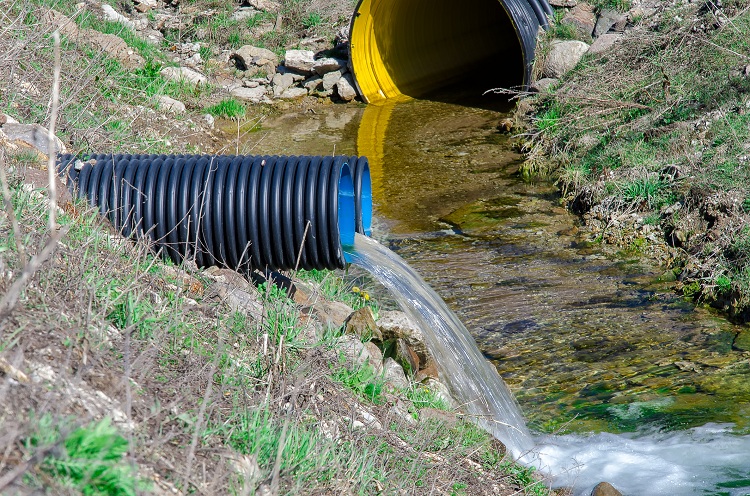
Water from stormwater can be drained into the nearest body of water or a common channel specially designed for this purpose.
Based on the foregoing, we can draw the following conclusion: the storm sewer of a suburban private house should have a large private well.This is mandatory with the option, there is no pond, lake or river nearby.
How to choose the diameter of the pipes
The cross section of a suitable pipe is determined by many factors, including the slope under which it is laid. But the main parameter is the maximum possible volume of fluid discharged. Its calculation is carried out according to the following simple formula:
Rwater = IO * Cr. Area * K,
where: R. water - the maximum possible flow rate of the liquid at the tap; AI - precipitation intensity (the maximum figure for a given territory is taken from the directory). The unit is liter / second. per hectare; Kr.pl. - roofing area of the house; K is the absorption coefficient of the water surface.
This is a reference characteristic. For basic materials, the value of this indicator is presented in the table.
Table 1
| Material | K is the moisture absorption coefficient. |
| Crushed stone with bitumen | 0,6 |
| Asphalt concrete | 0,95 |
| Crushed stone | 0,4 |
| Cement concrete | 0,85 |
| Roof | 1 |
We look for the diameter by the value deduced using the above formula. This must be done, taking into account the magnitude of the slope, displayed as a percentage: 1% = slope 1 cm / 1 meter length.
table 2
| Pipe diameter, millimeters | |||
| Percentage bias | 200 | 150 | 100 |
| 1,5 – 2,0 | 77,01 | 31,53 | 10,03 |
| 1,0 – 1,5 | 66,69 | 27,31 | 8,69 |
| 0,5 – 1,0 | 54,45 | 22,29 | 7,10 |
| 0,3 – 0,5 | 38,50 | 15,76 | 5,02 |
| 0 – 0,3 | 29,82 | 12,21 | 3,89 |
If several gutters are connected to one pipe, its diameter is calculated by simply summing the values of all input flows. The methodology for selecting the characteristics and sizes of other components of the storm sewer device for a private country house - funnels, trays, gratings and so on. - similar to the scheme for pipes.
Storm sewage will create comfortable conditions during rainfall in the form of rain and when snow melts in your area. It will prevent the occurrence of stagnation of water and puddles by removing excess moisture from the adjacent area. But for its adequate functioning, it is necessary to correctly perform all the calculations and make the installation.
